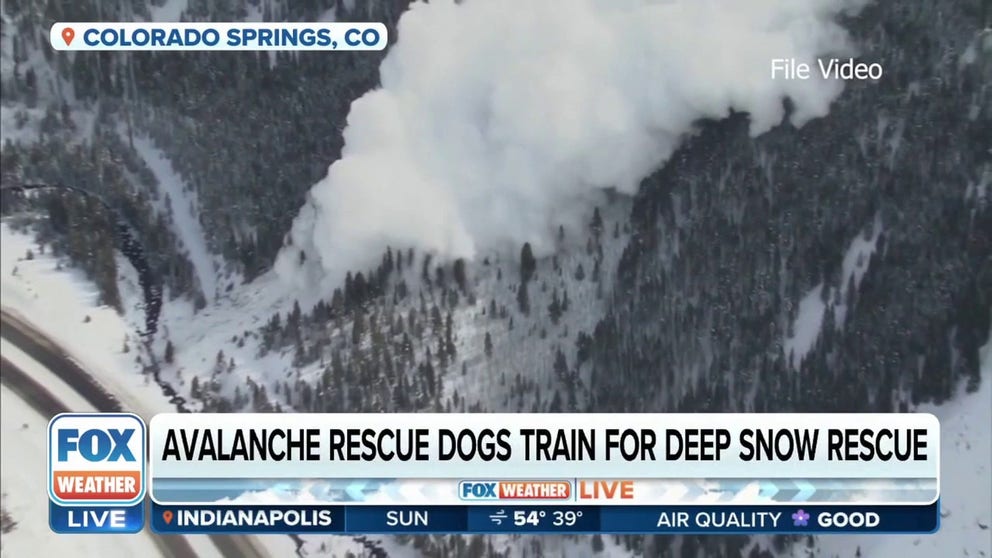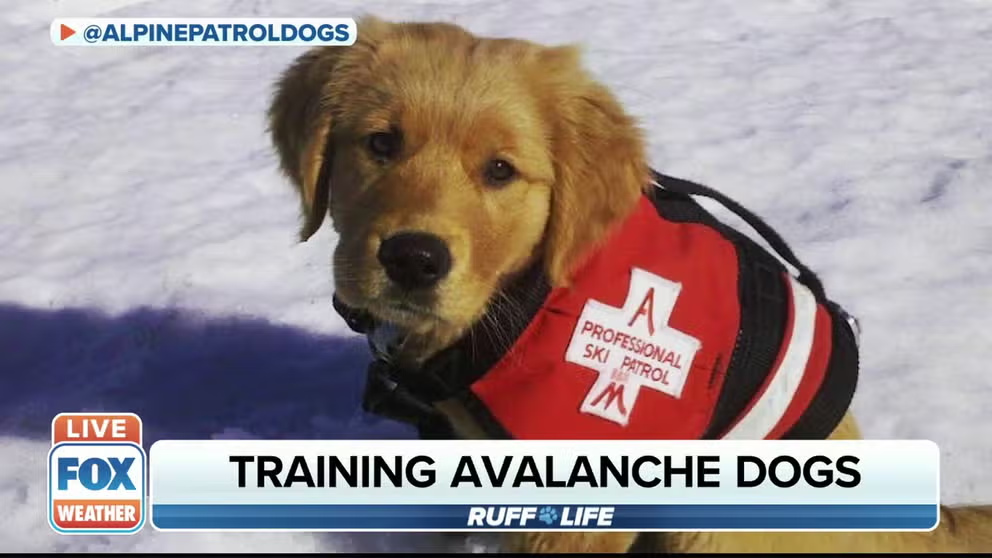Buried alive by an avalanche: How dogs come to the rescue
A meteorologist allows herself to be buried under feet of snow as part of avalanche dog rescue training.
How does an avalanche rescue dog find a buried person?
A FOX 21 reporters takes us to the slopes and bravely gets buried under the snow to find out first hand how avalanche rescue dogs sniff out their victims.
COLORADO SPRINGS, Colo. – "Man’s best friend" may be an understatement for these dogs. They find people who are buried alive under snow. It is a race against time after an avalanche as panic and hypothermia set in as air runs out.
FOX 21 Meteorologist Valerie Mills put her life in four paws and helped out training the Monarch Mountain ski patrol rescue dogs. She played the victim in a drill called "live burial." She climbed into a snow cave and let ski patrol humans cover her over with feet of snow.
WATCH: AVALANCHE WIPES OUT SKIERS IN AUSTRIAN ALPS
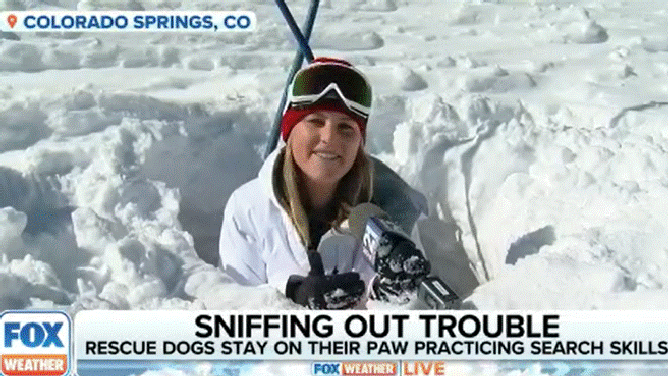
Mills climbs into the snow cave.
(FOX 21 / FOX Weather)
"We try to make the holes look as much as natural as possible, like we haven't messed with them or done much with them to make sure it kind of mimics avalanche debris," Mike Collette, Ski Patrol Supervisor at Monarch Mountain in Colorado Springs, Colorado explained.
He said that every moment counts after a person is buried in the snow.
"Ten to 15 minutes is your best chance of survival. The snow becomes like liquid, so it's like a water coming down the slope," Collette described what it is like to be in an avalanche. "And then as soon as it starts to slow down, it sets up like concrete."
KABOOM! HOW CANNONS ARE USED TO FIGHT AVALANCHES
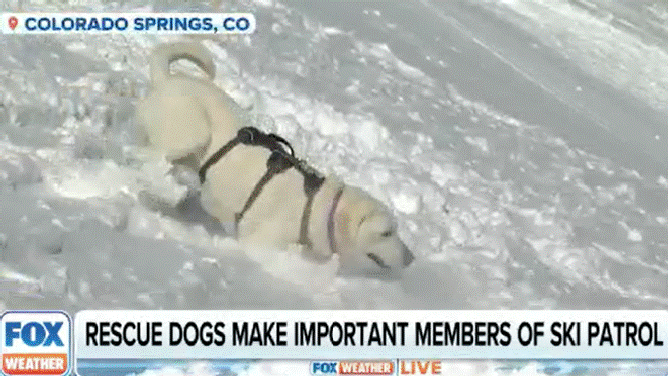
Avalanche rescue dog Glenn searching for human scents with Collette in tow.
(FOX 21 / FOX Weather)
Dogs like Glen are the only way to locate an avalanche victim if the person is not wearing an avalanche transceiver. That is a device which sends out a low-powered radio signal when activated. Anyone carrying one can set their transceiver to receive if another goes missing.
The avalanche dogs literally sniff out those buried under feet of snow. Dogs can smell up to 100,000 times better than humans, according to Pet MD. A canine can detect the equivalent of a half-teaspoon of sugar in an Olympic-sized swimming pool.
US PROFESSIONAL SKIER AMONG 2 KILLED IN JAPAN AVALANCHE
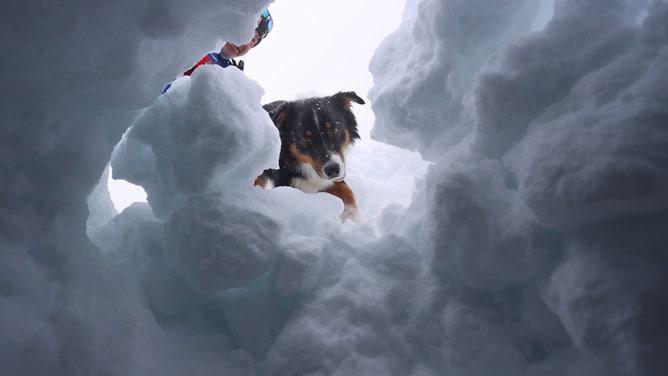
File: An avalanche rescue dog digging through snow after detecting a human scent.
( Karl-Josef Hildenbrand/picture alliance / Getty Images)
Dogs can also "smell in 3-D" says Pet MD. A dog can smell separately with each nostril. The brain combines the two scents to make a 3-D smell map. This is similar to the way humans use two eyes to see in 3-D view.
Dogs can also detect minute reductions of the concentrations of odor molecules which gives them an idea of the passage of time since person was at a location. The highest concentration of molecules will be on the person who emits a scent cone through the layer of snow.
DANGERS OF AVALANCHES, AND HOW TO STAY SAFE ON THE SLOPES
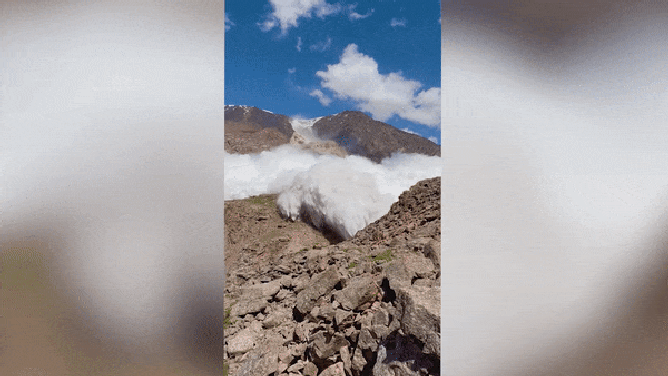
File: Take a look at how quickly avalanches flow. Harry Shimmin captures an avalanche in Kyrgyzstan on July 8, 2022.
(Harry Shimmin via Viral Hog / FOX Weather)
Collette releases Glen who traverses the avalanche zone sniffing. Wind throws a wrench into the works by pushing the scent.
"Making sure that we're finding the correct wind directions for that scent that's traveling downhill so that we're putting ourselves in the best possible situation for a positive rescue," said Collette who follows Glen with a shovel, first aid kit and a pole or probe to sink into the snowpack to find caves and/or people.
Dogs start training for this duty at about 8 weeks old. They learn sit, stay, come like all other dogs but also perfect the skill of sniffing out a person.
HOW TO WATCH FOX WEATHER ON TV
Here's what it takes to train avalanche rescue dogs
Everyone who loves winter sports knows to pay attention to snow risks, especially avalanches. And these adorable dogs are trained to help with search and rescue efforts if people become trapped under the snow.
"We work the dogs through a progression where we essentially teach them that game and show them how to go about using their nose and identifying human scent under the snow," Chase Allstadt who trains Alpine Meadows Avalanche Search Dogs in Alpine Meadows, California told FOX Weather last winter. "It really is one of your last tools."
His dogs work for the resort where Allstadt said it is "incredibly rare" that the dogs are deployed. Many times the dogs accompany county search and rescue departments in the backcountry. Even if the dogs are too late, the find helps grieving families.
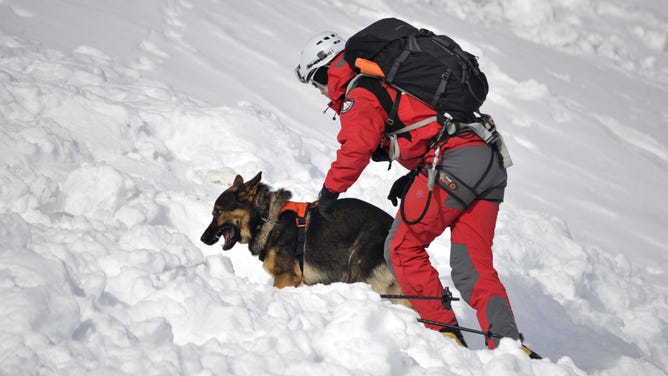
File: A mountain rescue.
(Andia/Universal Images Group / FOX Weather)
"Purely the statistics about being involved in avalanches really don't generate a whole lot of positive outcomes," Allstadt said. "But the fact these dogs can be used to kind of bring closure to families is super important."
The NWS says reports that avalanches kill more than 150 people worldwide each year. And 90% of the avalanches are triggered by the victim or someone in the victim’s party.
